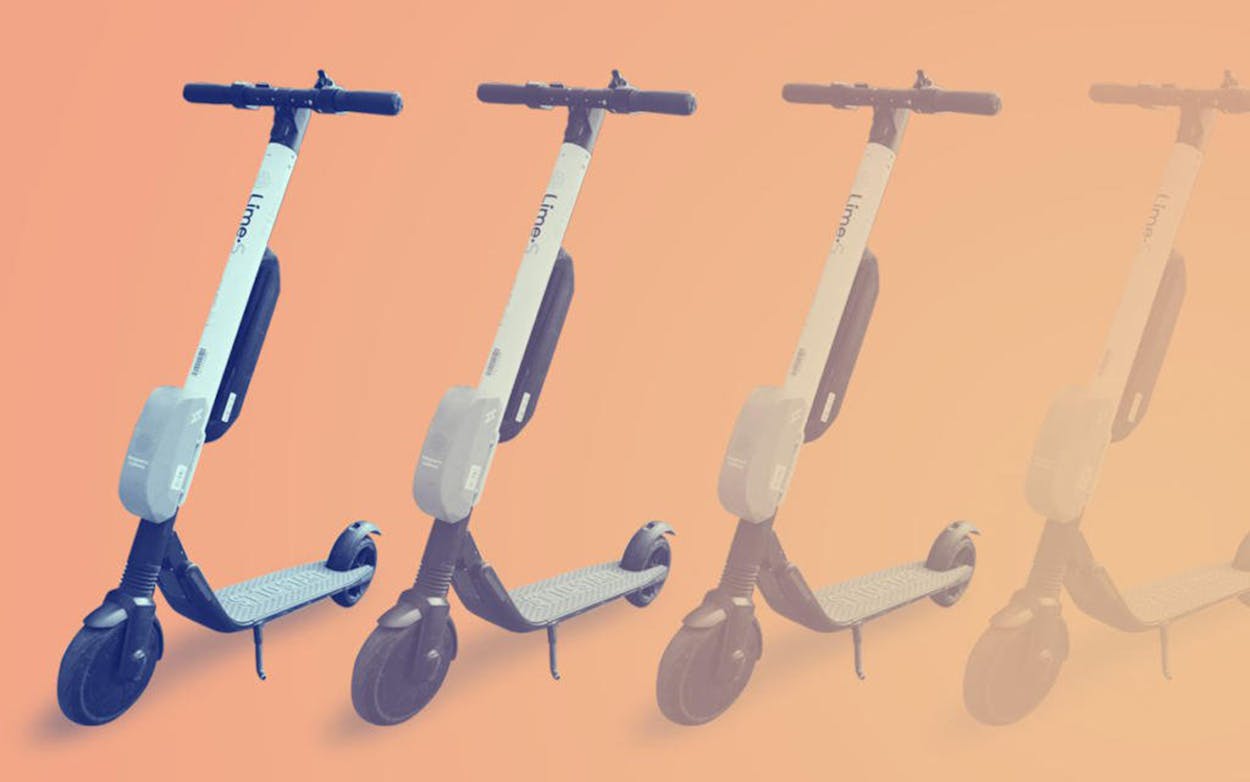If you live in Austin, Dallas, or San Antonio, it can be hard to remember that just a year ago, dockless electric scooters didn’t adorn every corner. A bird was a flying feathered animal, a lime was a sour fruit, and people got around the city on foot, on a bike, in a car, or through public transportation. Since the rollout of Bird and Lime in late 2017, though, the scooters—rented for a few cents per minute—have become ubiquitous fixtures in cities across Texas and America. They’re in our metropolises (with notable exceptions like Houston, where the huge population and car culture make it a challenging market for a model that’s still being developed) and in smaller places like Abilene, Lubbock, and Plano. The mode of transportation is being hailed as the solution to the dreaded last-mile problem that’s plagued urban transit for generations and one of the hottest business models in the world (transportation giants Uber and Lyft are both getting into the market). It’s also an entirely new kind of safety hazard.
This week, the Center for Disease Control announced that it would be conducting its first study of the health risks of dockless scooters by looking at the incidents and injuries that occurred in Austin over a 60-day period this fall, from September 5 to November 4. It will be the first study of its kind, focusing “on 37 EMS calls and 68 scooter injuries reported through syndromic surveillance conducted at area hospitals.” That time period covers hundreds of thousands of rides: In October alone, there were 275,300 scooter rides taken in Austin, covering a distance of 264,300 miles, or 0.96 miles per ride.
The study comes at a good time. The city is assessing its rules for dockless scooter rentals this winter and will propose a safe-riding ordinance in late February, just before 70,000-odd people descend upon Austin for SXSW. The festival crowd is firmly within the scooter demographic—young, tech-savvy, in a hurry, and interested in technology—and will want to get around the city when traffic is especially high.
But as supported by the involvement of the CDC, Austin isn’t the only city concerned about the safety of scooters. As the market expands with additional companies and to more areas underserved by public transit, others will look closely at the impact and risks of the devices. The Austin study will be a helpful step in that process.








